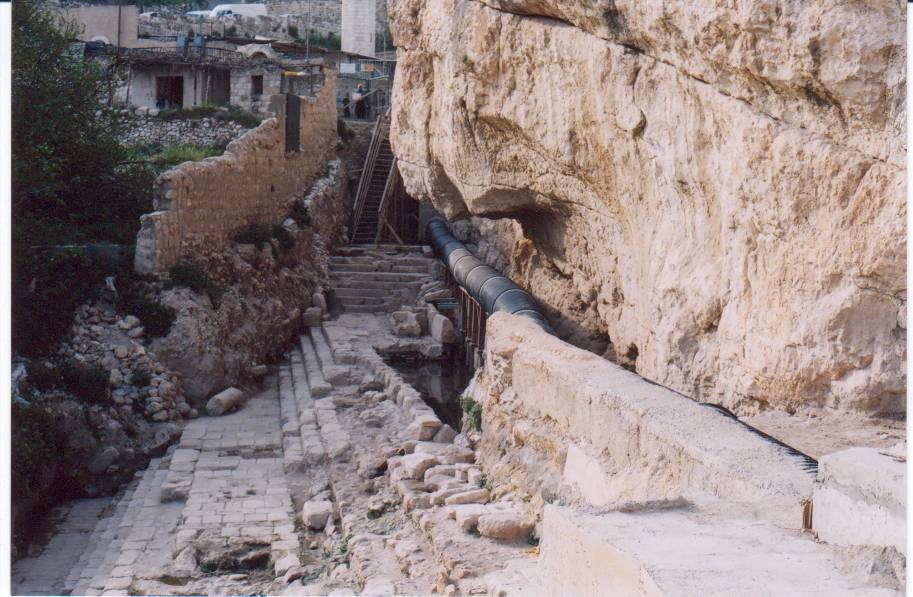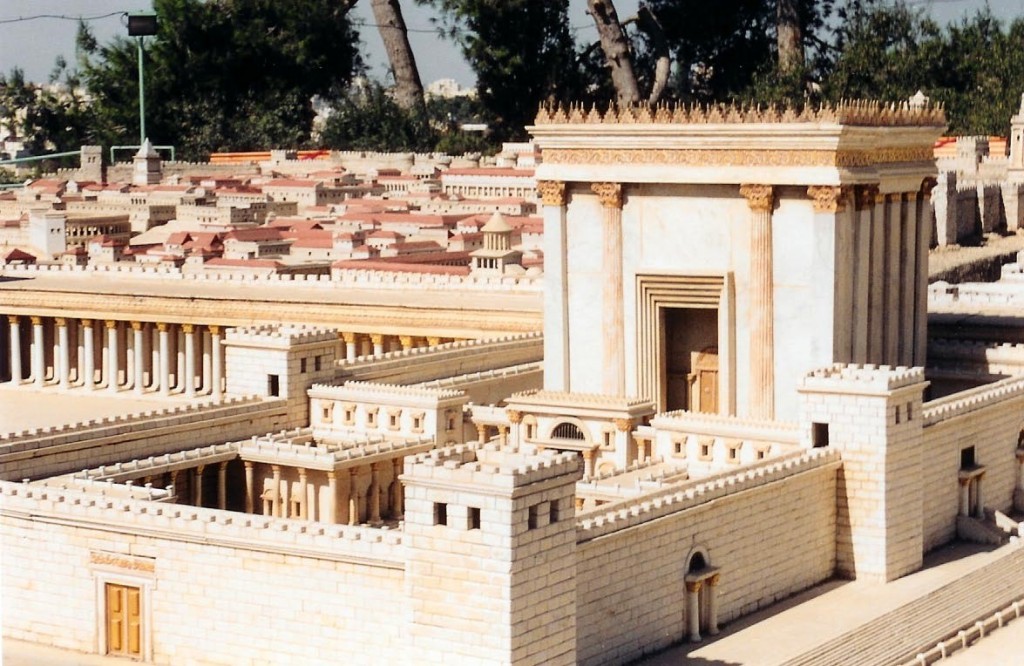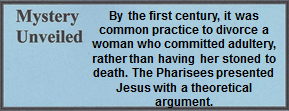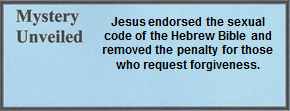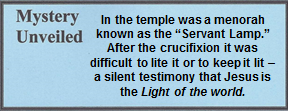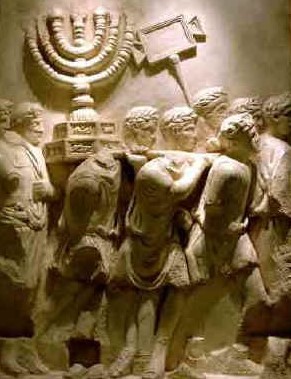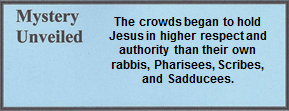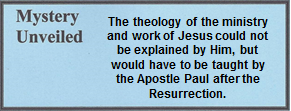11.02.10 Mt. 18:23-35
PARABLE OF SERVANTS IN DEBT
23 For this reason, the kingdom of heaven can be compared to a king who wanted to settle accounts with his slaves. 24 When he began to settle accounts, one who owed 10,000 talents was brought before him. 25 Since he had no way to pay it back, his master commanded that he, his wife, his children, and everything he had to be sold to pay the debt.
26 “At this, the slave fell facedown before him and said, ‘Be patient with me, and I will pay you everything!’ 27 Then the master of that slave had compassion, released him, and forgave him the loan.
28 “But that slave went out and found one of his fellow slaves who owed him 100 denarii. He grabbed him, started choking him, and said, ‘Pay what you owe!’
29 “At this, his fellow slave fell down and began begging him, ‘Be patient with me, and I will pay you back.’ 30 But he wasn’t willing. On the contrary, he went and threw him into prison until he could pay what was owed. 31 When the other slaves saw what had taken place, they were deeply distressed and went and reported to their master everything that had happened.
32 “Then, after he had summoned him, his master said to him, ‘You wicked slave! I forgave you all that debt because you begged me. 33 Shouldn’t you also have had mercy on your fellow slave, as I had mercy on you?’ 34 And his master got angry and handed him over to the jailers to be tortured until he could pay everything that was owed. 35 So My heavenly Father will also do to you if each of you does not forgive his brother from his heart.”
In this society, slaves could own property and become a debtor (Gk. opheiletes 3781) [1] to his owner/master. If the agreed payments were not made, the property could be seized. This was a real-life issue concerning business affairs for the Jewish people.
They also had to pay a huge amount of taxes to corrupt tax collectors. They frequently had to mortgage their land to pay taxes and hoped they would not be tossed in prison or sold as slaves.[2] Most likely it was for this reason, Jesus alluded to the debtor, creditor and the prison in his teachings.[3] The classic example was the steward who owed the king and the servant who owed the steward.
The key point is that the forgiveness received from the heavenly Father should be the basis to forgive others. Ancient laws could, at times, become rather complicated concerning loans, mortgages, and the consequences for the failure of payment.[4] This was true not only in Israel with its Oral Law,[5] but in all countries. The one overriding principle that Jesus taught more than anything else was the principle to forgive.
“10,000 talents.” The talent (Gk. talanton 5007) was the largest unit of currency in the ancient Near East, and was the equivalent to 114 pounds of silver[6] or about fifteen years of labor of a single man.[7] Obviously ten thousand talents was a debt that he could never repay – obviously far beyond human comprehension, and that is foundational to this parable.[8] Clearly it was an exaggerated figure, a hyperbole, but it was to emphasize the principle and importance of forgiveness.[9] While it is easy to forgive a small debt or offense, Jesus was focused on major events of life that needed serious forgiveness. To put that into perspective, Josephus said that the entire province of Judea had to pay an annual tax of 600 talents to the Romans,[10] meaning, that debt of 10,000 talents was the equivalent of more than 16 years of taxes.
On the other hand, some individuals in ancient times had huge personal debts. During to the days of the Roman Empire, a small silver coin was minted, known as the sesterius (or sesterce; plural: sestertii). It was equal to one-fourth of a denarius. Mark Anthony, at age 24, owed 6,000,000 sestertii and fourteen years later, he owed 40,000,000 sestertii. Milo owed 70,000,000 sestertii and Curio owed 60,000,000 sestertii.[11] So the illustration by Jesus was hyperbole for the Jews but realistic concerning the rich and famous of Rome.
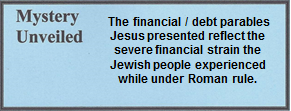
“He, his wife, his children, and everything he had to be sold to pay the debt.” When a man could not pay his financial obligations, all of his property was sold to pay his creditors. This could potentially include the sale of his family into slavery although Hebrew law had restrictions on families that went into slavery.[12] All cultures in the ancient Middle East had provisions in civil law for the sale of family for the payment of debt (cf. 2 Kg. 4:1). However, only the Mosaic Law limited such slavery to seven years. In fact, since Jewish laws forbade the sale of one’s wife because it would destroy a family and create a divorce, this suggests the individuals in the parable may have been Gentiles.[13] The point of the parable, however, is that one must be ready to forgive.
Modern readers tend to read this narrative without the clear reality that slavery was practiced, and becoming a slave was a real possibility. Both heathen and Jewish slaves were sold in Jerusalem.[14] Various sources indicate that there were few, if any, slaves in the rural countryside, but most were domestic urban slaves or government slaves. Since the Holy City had a significant Gentile population, much to the chagrin of Jewish leaders, heathen slaves were bought and sold at the slave market. Ancient writings indicate the existence of a stone upon which slaves of both sexes stood while bidders examined them and bid on them. The historian Josephus made frequent references to slaves, especially during the days of Herod the Great.
Jerusalem was, in fact, a very cosmopolitan community with people from many different countries and with different belief systems living there. Male and female slaves were bought and sold on the market block. Several accounts of slavery in the day of Jesus are as follows:
- At one time, Tobiah, a physician in Jerusalem, had a freed slave who was to testify in a court of law, but the priests and Sanhedrin disagreed on whether the freed slave could testify.[15]
- During the reign of Herod the Great, Karkemith, a freed slave woman, was suspected of adultery and given the “water of bitterness” or “bitter waters”[16] to drink.[17]
- In another case, an ossuary was discovered about two miles north of Jerusalem in the town of Sha’fat. On it was inscribed the name of a slave, Epictetus.[18]
- In the Book of Acts (12:13), Rhoda was a domestic slave in the home of John Mark’s mother.
- Jewish writings report that once an Athenian purchased a male slave in Jerusalem.[19]
When Herod the Great became ruler over his domain, he was determined to end particular acts of injustice practiced by corrupt individuals in the cities and countryside. One of the laws he changed pertained to slavery, making the practice more in line with the Roman and Greek practice of perpetual slavery rather than the limits of the Mosaic code. Furthermore, it is believed that a tax collector called a gabbai collected the taxes on the slaves sold there.[20] Josephus briefly recited the Mosaic code before giving the new decree by Herod.
The thief shall restore fourfold,[21] and that if he have not so much, he shall be sold indeed, but not to foreigners, not so that he be under perpetual slavery, for he must have been released after six years. But this [new] law [by Herod], thus enacted in order to introduce a severe and illegal punishment seemed to be a piece of insolence in Herod, when he did not act as a king but as a tyrant.
Josephus, Antiquities 16.1.1 (3-4)[22]
The purpose of the decree may have been to eliminate what Herod perceived to be injustice, but in effect, it contributed to the Jewish hatred for him. Therefore, when Jesus spoke of the potential of becoming a slave,[23] it was a serious issue. Jews purchased slaves under Jewish law, but if the buyer was non-Jewish, the slave might never become free.
Finally, this parable concerning the forgiveness of debts has an allusion of the forgiveness of sins as well. The English words sins and debts are both translated from the Aramaic word hoba. Therefore, when Jesus speaks of sinners, He is also speaks of debtors.[24] The Jews understood that the word debts had a spiritual significance, which needed divine intervention in the form of forgiveness.[25] This account reflects upon the incredible forgiveness and freedom found in Christ Jesus. There were three ways a Jew could become a slave at the time of Jesus.
- A thief who could not make restitution for what he had stolen could have been sold into slavery and the proceeds went to those who suffered loss as the result of his thievery. This applied only to male thieves (Ex. 22:2; Deut. 13:12).
- A voluntary sale of one’s self. This too was for men only, and was only in the case of extreme poverty (Lev. 25:39-43).
- The sale of an entire family, either by court action or voluntary decision. Families could not be broken up, but a Jewish father had to right to sell an underage girl to another Jew. If she was under the age of twelve, the custom meant that she would either marry the owner or his son at a later time.
“He grabbed him, started choking him, and said, ‘Pay what you owe!’ ” When a debtor failed to make the required payment on a loan, the law permitted the creditors to drag their debtors by the throat to a judge, who then might sentence the debtor to prison until the debt was paid. An example of this was written 66 B.C. by the Roman philosopher and lawyer Marcus Tullius Cicero (106-43 B.C.) in his work Pro Cluentio,[26] said “Lead him to the judgment seat with twisted neck.”[27] Since the Romans occupied the Holy Land, they were subject to Roman laws and overlords and, therefore, this narrative was very realistic to His listeners.
Under Roman law, if a debtor could not pay his debt, he was given 60 days to make payment and a public announcement was made three times in the marketplace. If the debt was still not paid, Roman investment creditors were known to have private dungeons or prisons where debtors were placed until someone pitied him enough to pay the debt and free him. Torture and death were common in the Roman prison system.[28] Those were the days when knowing who one was borrowing from was as important as how much one was borrowing.
[1]. Opheiletes – “One who owes anything to another.” Vine, “Debtor.” Vine’s Complete Expository Dictionary. 2:150.
[2]. Sanders. “Jesus in Historical Context.” 430.
[3]. See 02.03.03 “Economy” for a brief description of the condition of the economy during the ministry years of Jesus.
[4]. For further study of loans, debts, and how first century Jewish courts ruled, see the Mishnah and the chapter titled Baba Bathra.
[5]. See 02.02.18 Mishnah, 02.02.16, and Oral Tradition 02.02.20.
[6]. The weight of 114 pounds is based upon Exodus 30:13, which may have changed by the first century. Vine, “Talent.” Vine’s Complete Expository Dictionary. 2:617.
[7]. Appendix 20.
[8]. Gilbrant, “Matthew.” 389.
[9]. Bullinger, Figures of Speech Used in the Bible. 423.
[10]. Josephus, Antiquities 17.11.4 (320)
[11]. Geikie, The Life and Words of Christ. 1:353-54; 2:629-38.
[12]. Ex. 22:3; Lev. 25:39, 47; 2 Kg. 4:1; Neh. 5:5; Isa. 50:1.
[13]. Gilbrant, “Matthew.” 389.
[14]. God hates slavery, but it was part of the human predicament, which is why He permitted slavery for a limited duration of seven years (Ex. 21:2 ff.; Deut. 15:12). In Amos 2:6 He brought judgment upon Israel for the enslavement of its own people. The way the Apostle Paul dealt with Philemon, demonstrates how God changed the slavery-based economy by changing the hearts of men.
[15]. Mishnah, Rosh ha-Shanah 1.7.
[16]. See “Bitter Waters” in Appendix 26.
[17]. Mishnah, Eduyoth 5.6.
[18]. Jeremias, Jerusalem in the Time of Jesus. 346.
[19]. Lam. R. 1.13 on 1.1, Son. 1.12, 78; Jeremias, Jerusalem in the Time of Jesus. 313-15.
[20]. Moseley, Yeshua: A Guide to the Real Jesus and the Original Church. 119; Lang, Know the Words of Jesus. 249.
[21]. In Luke 19:1-10, Zacchaeus told Jesus he would repay anyone he cheated four times. See. 12.04.06 as this was the observed biblical standard in the days of Jesus.
[22]. The punishment was “illegal” from a Jewish perspective since it did not follow the Mosaic code.
[23]. Because the Jews experienced slavery and thankfulness was one (# 10) of their Eighteen Benedictions, for a Jew to unjustly call another Jews “a slave,” could subject him to excommunication from the synagogue. See Geikie, The Life and Words of Christ. 2:304.
[24]. Bailey, Jesus through Eastern Eyes. 252.
[25]. Taylor, “Debt, Debtor.” 61-62.
[26]. Marcus Tullius Cicero, Pro Cluentio (In Defense of Aulus Cluentius), 21. The writings of Cicero (107-44 B.C.) pertain to the records of the Roman province of Syria, of which Israel was a part.
[27]. The phrase “twisted neck” refers to holding one by the throat in some manner and forcing him to stand before a judge. A similar statement was made by Cicero in his work In C. Verrem, 4:10 (In Defence of Gaius Verres) written in 70 B.C.
[28]. Geikie, The Life and Words of Christ. 2:637.

